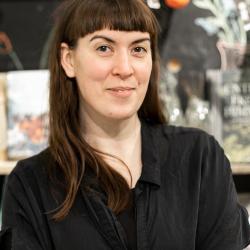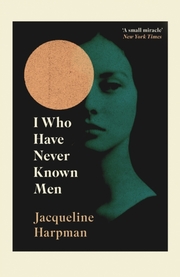Erika (sie/ihr)s Tipp

I Who Have Never Known Men
40 women locked away in an underground bunker, guarded by men. They are forbidden from touching each other or committing suicide, despite many attempts after years of imprisonment. Suddenly, an alarm sounds, and the guards rush to leave, accidentally dropping the keys to the cage. The women have a chance to escape and climb back to the world they once knew—at least, they thought they knew. What they find is a desolate landscape, with no idea where or when they are.
The group begins to organize themselves, packing some of the plentiful food from the bunker and starting to walk. They encounter wide, empty fields, devoid of animals, civilization, or any signs of life, until they find another bunker. Upon opening the door, a pungent smell hits them like a brick wall…
The protagonist and narrator of the story is the youngest of the group, and as such, she grew up inside the cage. Shaped by this captive life, she is vastly different from her companions, and this difference underscores how survival and adaptation are handled in such extreme circumstances.
For me, the whole story felt like a social experiment. It raises questions about what aspects of society are mere social constructs and which needs, emotions, and desires are deeply rooted in human nature, such as compassion and loneliness.
Harpman creates a narrative where the reader is left in the dark, much like the characters themselves. Not only did the smooth, fluid writing style make me fly through the book, but without boundaries, I couldn't help but fantasize and question what the larger meaning behind this incredible story was. I love stories like this, and this one has quickly become a new favorite.
Jetzt vorhanden in diesen Filialen:

BUCHBOX! Helmikiez: 2 Stück
BUCHBOX! Bötzowkiez: 1 Stück
Love Story of Berlin: 5 Stück
Weitere Tipps


Janina empfiehlt:
Fatale Flora - Von giftigen Pflanzen und gemeinen Menschen
Harnickell, Noemi

















